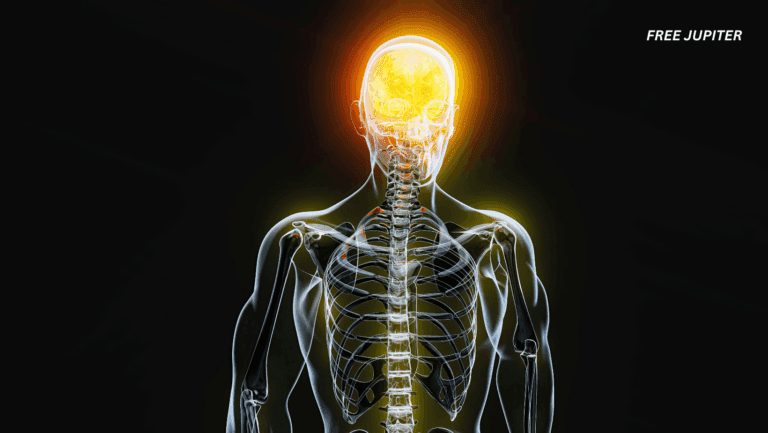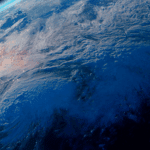Friendly Note: FreeJupiter.com shares general info for curious minds 🌟 Please fact-check all claims—and always check health matters with a professional 💙
Two centuries ago, daily life was threaded with the sights, sounds, and textures of the natural world. Rivers weren’t just weekend destinations — they were lifelines. Blossoms weren’t an aesthetic backdrop — they marked the passing of seasons. Moss, birdsong, and wood smoke were part of the sensory language of everyday existence. But according to a new study, this bond — what researchers call nature connectedness — has declined by more than 60% since the year 1800.
The research, led by Professor Miles Richardson from the University of Derby, suggests that our cultural, emotional, and practical relationship with nature is shrinking — almost perfectly mirroring the disappearance of nature-related words from literature. As towns swelled into cities, wildlife retreated, and parents passed down fewer outdoor traditions, the intimate connection between humans and the natural world began to wither.
And while the story has been unfolding for two centuries, the pace and stakes have never been higher.
Tracking 220 Years of Change
The study mapped historical shifts in three key areas:
- Urbanisation: As more people moved to cities, daily exposure to wild landscapes diminished.
- Local biodiversity loss: Fewer animals and plants in neighbourhoods meant fewer chances for spontaneous encounters with nature.
- Intergenerational transfer: Parents stopped passing along certain skills, games, and rituals that once linked families to the outdoors.
By combining these factors with data on the use of nature words in books between 1800 and 2020, Richardson’s team found a startling correlation: the less nature appeared in real life, the less it appeared in our collective imagination.
Between 1800 and 1990, nature references in literature dropped by 60.6%. Words like “willow” or “brook” that once appeared in poems, folk tales, and everyday descriptions simply faded. Interestingly, this loss wasn’t gradual — there were noticeable dips during periods of rapid industrialisation and urban expansion.
Read more: Earth Just Shattered the Lightning Distance Record With an 892-Kilometer Megaflash
A Rebound in Language — But Is It Real?
In the last few decades, there’s been a small revival in nature words, with the decline now standing at 52.4% rather than 60.6%. This could hint at a cultural shift — perhaps the rise of environmental awareness, the popularity of nature writing, or even the romanticisation of rural life in an era of climate anxiety.
But Richardson remains cautious: “Is it a genuine reconnection or just a quirk of the data?” The uptick could just as easily reflect publishing trends, increased digitisation of older works, or the way certain genres cycle in and out of popularity.
Still, the fact that language is such a clear mirror of lived experience is telling. As Richardson points out, “When something disappears from our language, it often means it’s disappearing from our lives.”
Why Nature Connectedness Matters
The significance of this isn’t just sentimental. Research over the past two decades has made it increasingly clear that a strong bond with nature isn’t a luxury — it’s fundamental to both planetary and personal health.
For the environment: People who feel connected to nature are more likely to make choices that protect it. They’re also more likely to support environmental policies, volunteer for conservation efforts, and teach those values to the next generation.
For mental health: Time spent in nature is linked to reduced stress, improved mood, sharper focus, and even stronger immune function. In fact, some psychologists now talk about “nature deficit disorder” — not as a clinical diagnosis, but as a way of describing the emotional and cognitive toll of being cut off from the natural world.
As Richardson puts it: “Nature connectedness is a root cause of the environmental crisis — but it’s also a root of human wellbeing. The two are inseparable.”
The “Extinction of Experience”
The study describes our current trend as an extinction of experience — a slow, generational loss of the everyday familiarity with wild places and species.
In the past, children might have learned to identify bird calls from a grandparent, picked blackberries on the walk home from school, or built dens in a nearby patch of woods. Today, many children spend far less unstructured time outdoors. The nearest “green space” might be a manicured park with little biodiversity, and screen-based entertainment often wins over exploring the local creek.
Other studies reinforce this finding: the single strongest predictor of whether a child will grow up connected to nature is whether their parents are connected to it. When that link is broken, it’s hard to repair — unless you intervene early.
Read more:New Discovery Suggests a Comet Explosion Altered The Earth 12,800 Years Ago
What the Models Predict
Richardson’s computer modelling is blunt: without significant change, nature connectedness will continue to decline for generations.
Popular engagement campaigns — like nature photo challenges or month-long outdoor activity drives — are valuable for boosting individual happiness but don’t halt the long-term slide. The effect, while positive, is short-lived.
By contrast, the model shows that early childhood engagement is transformative. Programs like forest school nurseries, where outdoor exploration is woven into the curriculum, create habits and values that persist into adulthood. Parents also play a critical role — families who integrate nature into daily routines, from weekend hikes to gardening, pass that connection along.
Greening the Grey
Urban design could make or break the effort to reverse the decline. The study found that simply adding a few more parks isn’t enough. In fact, a city might need to be ten times greener — with dense, biodiverse, and accessible natural spaces — to genuinely reverse the trend.
This could mean everything from green rooftops and vertical gardens to tree-lined streets, urban wetlands, and wildlife corridors that allow species to thrive alongside human populations.
Some cities are already experimenting:
- Singapore has integrated greenery into high-rise buildings, creating “vertical forests.”
- Melbourne, Australia has a citywide plan to double its canopy cover by 2040.
- London, UK is weaving “hedgehog highways” into fences so small mammals can move freely between gardens.
These examples suggest that ambitious urban greening isn’t just possible — it can become a defining feature of a city’s identity.
A 25-Year Window of Opportunity
Time, however, is short. Richardson’s model suggests that to truly reverse the decline, transformative policies in early education and urban planning must be rolled out within the next 25 years. Delay much longer, and the gap between generations will be too wide to bridge easily.
But there’s reason for optimism. Because our current baseline is so low, even modest improvements can have a significant impact. In Sheffield, for instance, residents spend just four minutes and 36 seconds per day in natural spaces. Increase that tenfold to 40 minutes, and the change could be profound — not only for mental wellbeing but for community attitudes toward conservation.
Don’t Disconnect Them
Perhaps the most striking insight from the study is also the simplest: children are born curious about the natural world. A child in 2025 is just as fascinated by a butterfly or a puddle as one born in 1800. The difference is whether that fascination is nurtured or neglected.
Richardson’s advice? Don’t disconnect them. Rather than focusing solely on “reconnecting” children later in life, we should prioritise not letting the bond break in the first place.
This means giving children direct, hands-on experiences — climbing trees, turning over logs to see what’s underneath, planting seeds, stargazing — and protecting the spaces where those experiences can happen.
Could We Be on the Brink of a Cultural Shift?
That small rebound in nature words might be more than a statistical fluke. Over the past few decades, there’s been a surge in eco-literature, nature documentaries, and even spirituality movements that emphasise harmony with the Earth. Social media has also made it easier to share moments of beauty — a fox crossing a path, a rainbow after rain — with a global audience.
While sharing a photo online isn’t the same as feeling the breeze on your face, it may keep nature present in people’s minds. And when awareness grows, action often follows.
Read more: Hundreds of Earthquakes Strike Beneath Major US Volcano, Raising Eruption Fears
A Path Forward
Rebuilding our relationship with nature will require changes on multiple fronts:
- Early education reform: Make nature a core part of the curriculum from nursery onward.
- Parental engagement: Support families in integrating nature into daily life.
- Urban transformation: Dramatically expand biodiverse green spaces in cities.
- Cultural reinforcement: Keep nature visible in art, literature, and public conversation.
These steps aren’t just about reversing a statistic — they’re about reshaping the kind of future we leave behind. If the past 200 years have seen a quiet retreat from nature, perhaps the next 200 could tell the opposite story: one of reconnection, restoration, and renewal.
If we take Richardson’s findings to heart, the work ahead may be vast, but it’s also deeply human. After all, the instinct to notice a blossom, follow a river, or run a hand across moss has always been there. It’s simply waiting to be reawakened.










